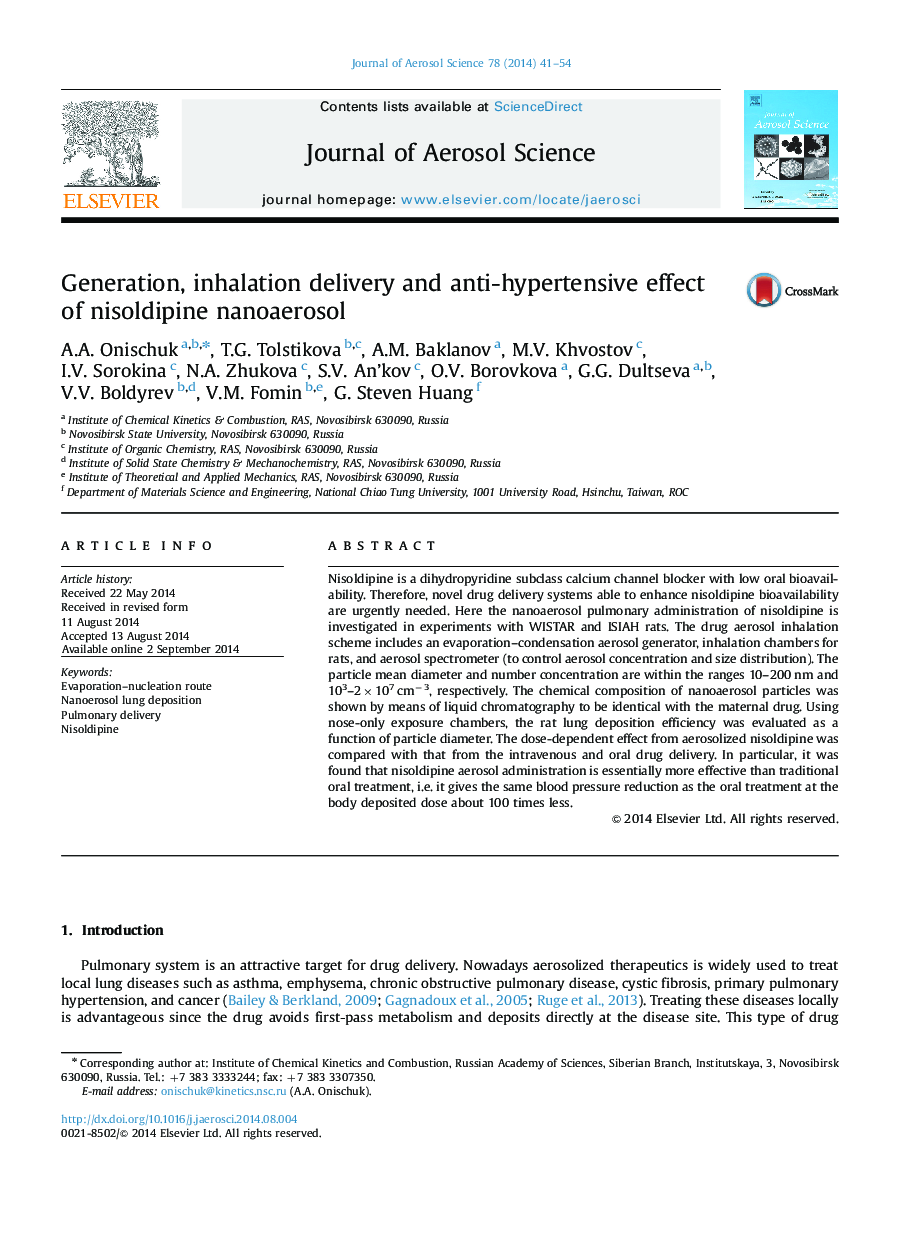| Article ID | Journal | Published Year | Pages | File Type |
|---|---|---|---|---|
| 4452328 | Journal of Aerosol Science | 2014 | 14 Pages |
•Nisoldipine nanoaerosol is generated by evaporation–nucleation route.•The aerosol lung deposition is examined in inhalation experiments with WISTAR rats.•The anti-hypertensive effect from aerosol inhalation by mice is studied.•The lung delivered dose is approximately equal to the systemically delivered one.•The aerosol administration is 100 times more effective than the oral treatment.
Nisoldipine is a dihydropyridine subclass calcium channel blocker with low oral bioavailability. Therefore, novel drug delivery systems able to enhance nisoldipine bioavailability are urgently needed. Here the nanoaerosol pulmonary administration of nisoldipine is investigated in experiments with WISTAR and ISIAH rats. The drug aerosol inhalation scheme includes an evaporation–condensation aerosol generator, inhalation chambers for rats, and aerosol spectrometer (to control aerosol concentration and size distribution). The particle mean diameter and number concentration are within the ranges 10–200 nm and 103–2×107 cm−3, respectively. The chemical composition of nanoaerosol particles was shown by means of liquid chromatography to be identical with the maternal drug. Using nose-only exposure chambers, the rat lung deposition efficiency was evaluated as a function of particle diameter. The dose-dependent effect from aerosolized nisoldipine was compared with that from the intravenous and oral drug delivery. In particular, it was found that nisoldipine aerosol administration is essentially more effective than traditional oral treatment, i.e. it gives the same blood pressure reduction as the oral treatment at the body deposited dose about 100 times less.
Graphical abstractFigure optionsDownload full-size imageDownload high-quality image (82 K)Download as PowerPoint slide
